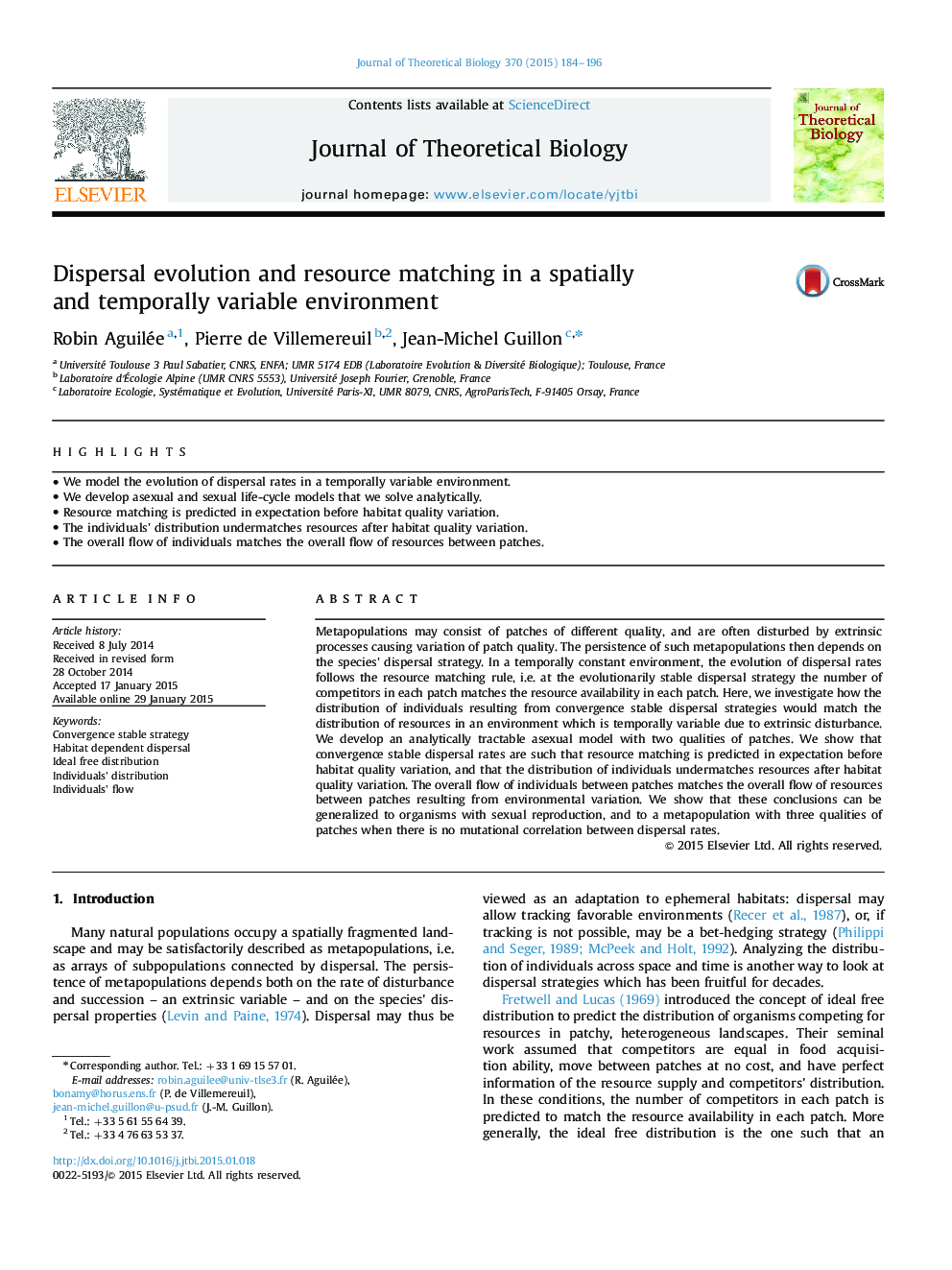| Article ID | Journal | Published Year | Pages | File Type |
|---|---|---|---|---|
| 6369939 | Journal of Theoretical Biology | 2015 | 13 Pages |
Abstract
Metapopulations may consist of patches of different quality, and are often disturbed by extrinsic processes causing variation of patch quality. The persistence of such metapopulations then depends on the species׳ dispersal strategy. In a temporally constant environment, the evolution of dispersal rates follows the resource matching rule, i.e. at the evolutionarily stable dispersal strategy the number of competitors in each patch matches the resource availability in each patch. Here, we investigate how the distribution of individuals resulting from convergence stable dispersal strategies would match the distribution of resources in an environment which is temporally variable due to extrinsic disturbance. We develop an analytically tractable asexual model with two qualities of patches. We show that convergence stable dispersal rates are such that resource matching is predicted in expectation before habitat quality variation, and that the distribution of individuals undermatches resources after habitat quality variation. The overall flow of individuals between patches matches the overall flow of resources between patches resulting from environmental variation. We show that these conclusions can be generalized to organisms with sexual reproduction, and to a metapopulation with three qualities of patches when there is no mutational correlation between dispersal rates.
Keywords
Related Topics
Life Sciences
Agricultural and Biological Sciences
Agricultural and Biological Sciences (General)
Authors
Robin Aguilée, Pierre de Villemereuil, Jean-Michel Guillon,
